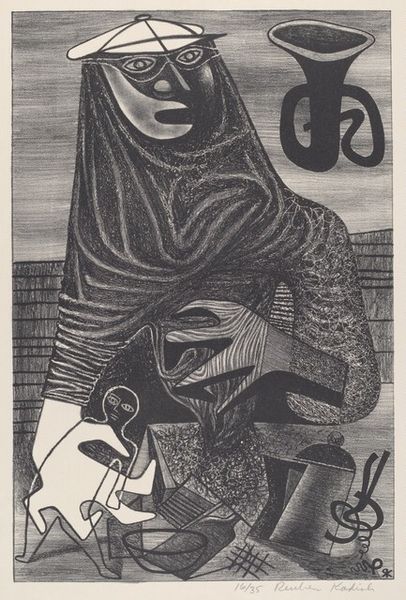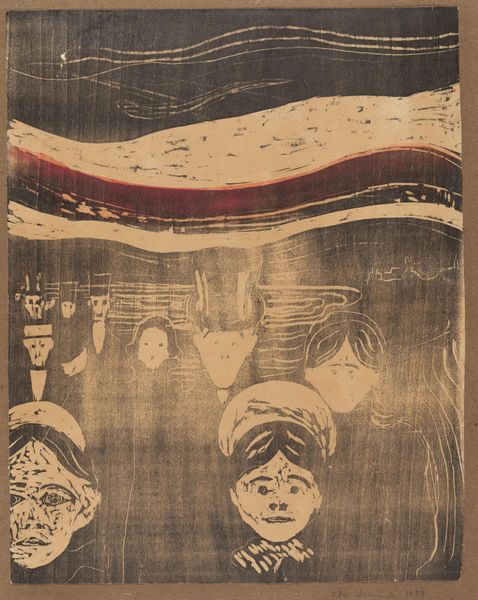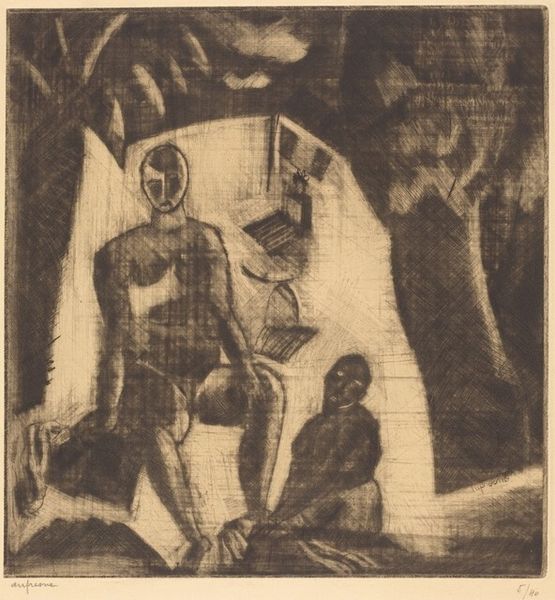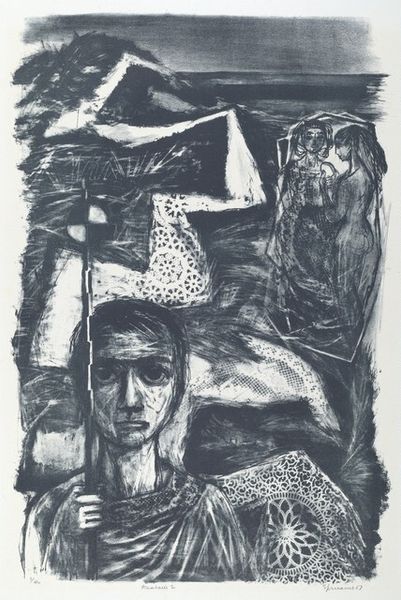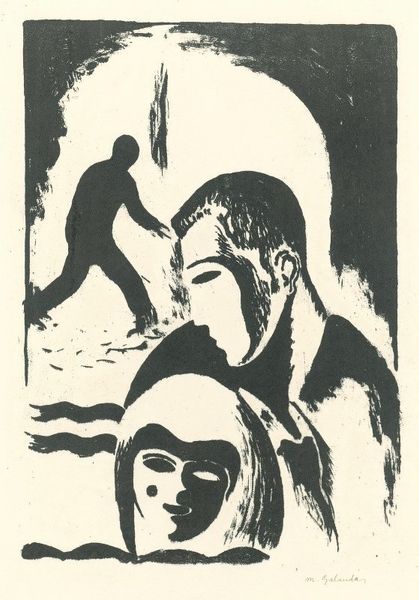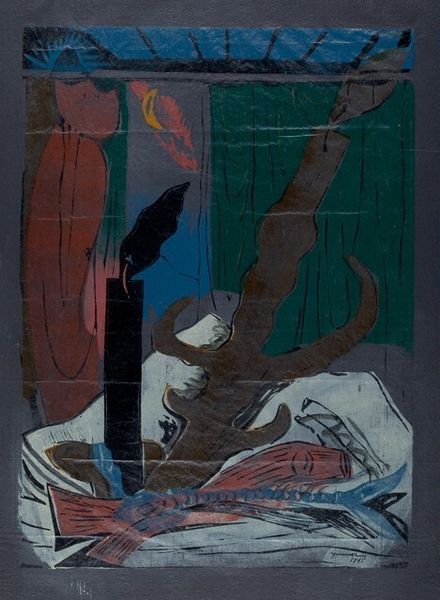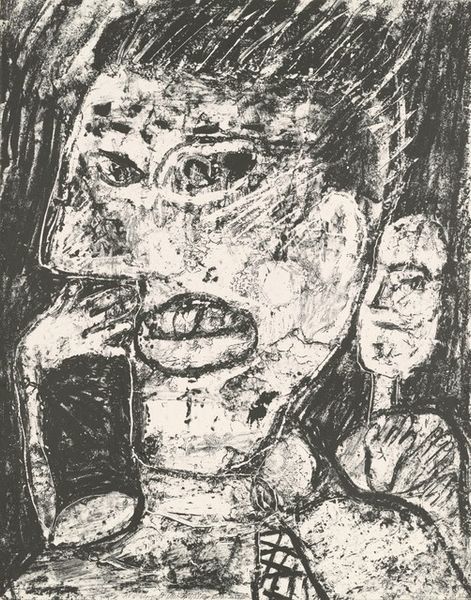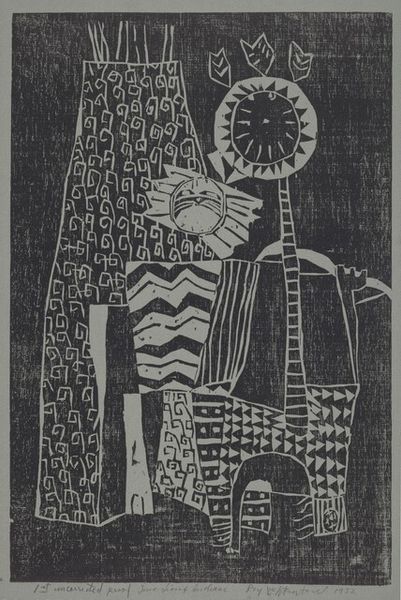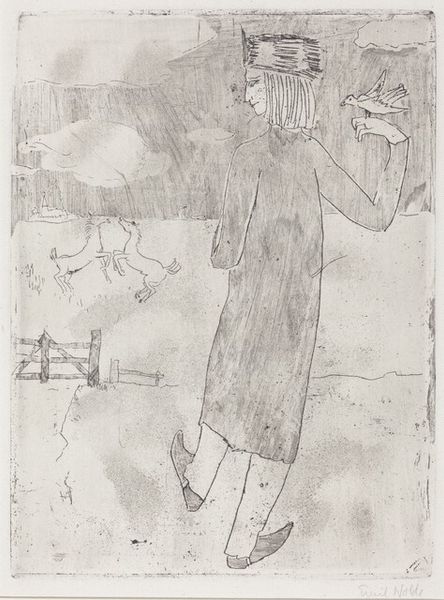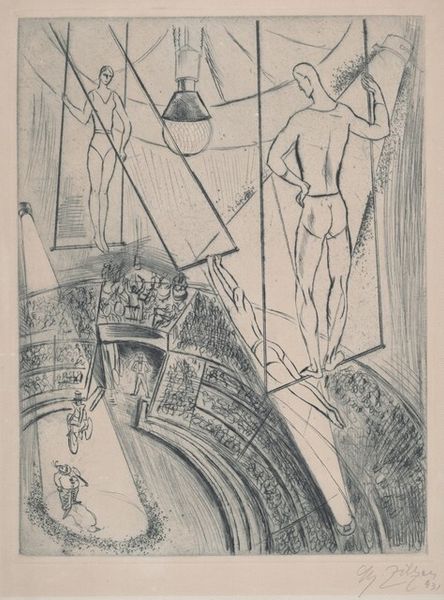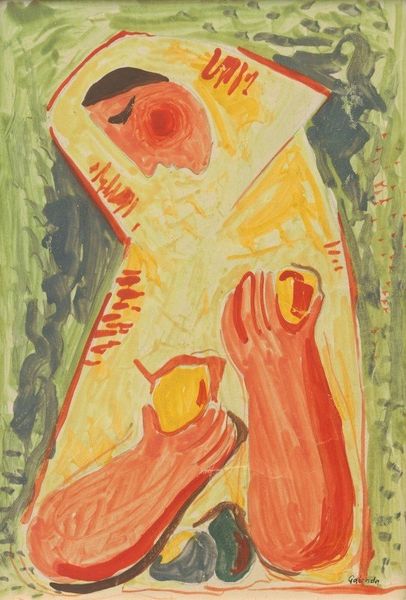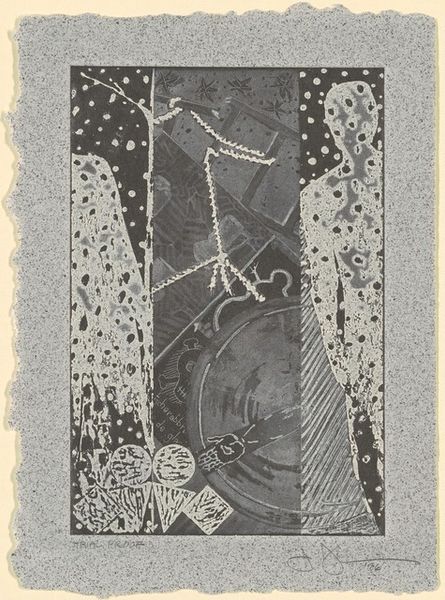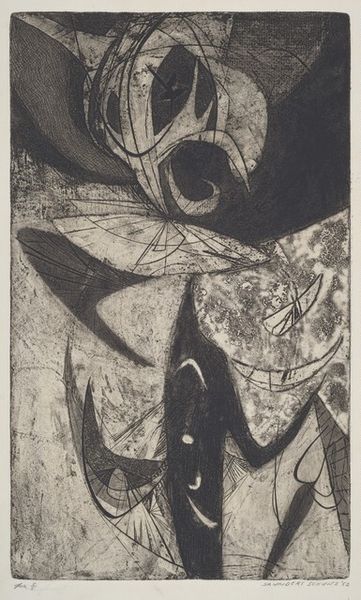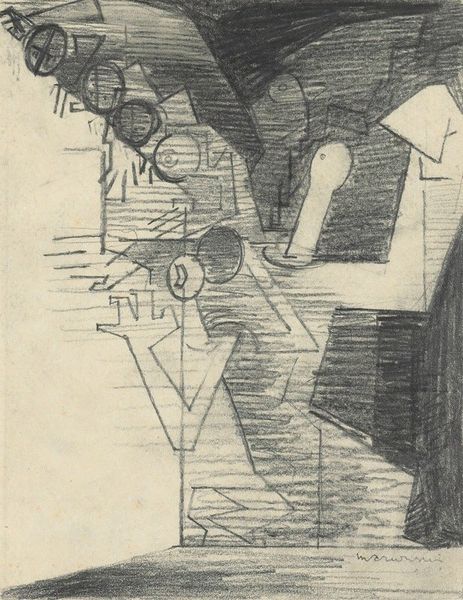
print, etching
portrait
etching
figuration
modernism
Dimensions: image: 68.3 x 50.8 cm (26 7/8 x 20 in.) sheet: 106.7 x 75.3 cm (42 x 29 5/8 in.)
Copyright: National Gallery of Art: CC0 1.0
Editor: We're looking at Italo Scanga’s "Blue Glass" from 1981, an etching on paper. It has this rather unsettling yet intriguing feel because of the collage-like effect and the somewhat distressed quality of the figure’s face. How do you interpret this work, especially within the context of its time? Curator: It’s interesting you picked up on that unsettled feeling. Considering the era, we can see Scanga reflecting anxieties about social and personal fragmentation. The disjointed elements—the hand, the glass, the ambiguous figure—almost speak to a world where identities and meanings are becoming destabilized, influenced by rapidly changing cultural norms and mass media imagery. Does the figure remind you of anything in particular? Editor: Now that you mention it, the face does seem like it’s drawn from various sources, almost like a magazine collage… Curator: Precisely! And think about the materials: etching, printmaking, traditionally seen as democratic, reproducible. How does the "Blue Glass" subvert this idea by not reproducing the world realistically? Scanga uses a visual vocabulary accessible to the masses to create a complex dialogue about how we perceive ourselves and others, which might make us uncomfortable. Editor: I didn’t initially think about the medium’s historical connotations of accessibility and how that contrasts with the content. It’s like he is questioning the ease with which we consume images and information. Curator: Absolutely. And the very act of displaying it within the context of the Museum or the Gallery makes you, the viewer, take time and effort to consider it rather than consume it. It prompts reflection on the political and public functions of art, doesn’t it? What's your final impression of the work? Editor: Seeing it through a historical lens makes this more than just a quirky print. It’s a social commentary, critiquing and unsettling our visual culture! Curator: Indeed. A challenging and important piece that prompts us to look deeper into how society impacts our perceptions.
Comments
No comments
Be the first to comment and join the conversation on the ultimate creative platform.
